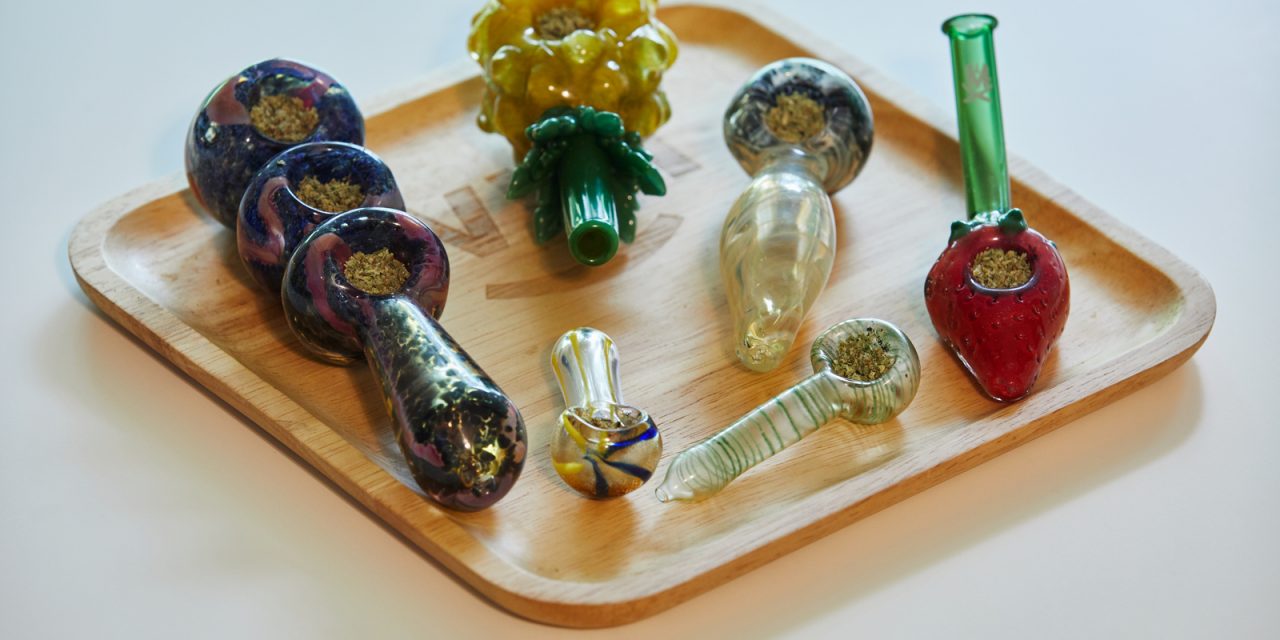By Justin Allec
And so we finally turn our attention to the humble glass pipe. While head shop display cases are filled with all manner of smoking devices made from every substance found on earth, the simple glass pipe occupies a cherished place in cannabis culture. Look at a brand new pipe: sleek, smooth, graceful colours, and easy to hold. Affordable and durable, chances are the first time you used cannabis was with a glass pipe.
I know that a glass pipe is my tool of choice. The big reason is simplicity. Aside from some kind of flame and the cannabis itself, there isn’t anything to worry about with a glass pipe. Put however much cannabis you need, head outside, apply heat, use the carb (or shotgun, depending on where you grew up) to cherry the bowl, and boom! You’re on your way.
Glass has several advantages over other materials. It’s an inert substance, which means that your pipe won’t transfer or leach flavours while you’re smoking. Glass also withstands temperature changes well, so you won’t burn your hand even during a longer session.
Probably one of the biggest attractions of glass pipes is the myriad of shapes and sizes available—to say nothing of the colours! While machine-made glass pipes are fairly common, they’re usually priced on the lower end and just aren’t as nice. They work fine, but the difference between machine-made and handcrafted is obvious once you hold it.
Artists use glass-blowing techniques to shape and form the pipe, and it’s an intense process thanks to the heat and timing needed to produce a perfect piece. They begin with a precast tube of glass, and then use a combination of high-temperature torches and blowing techniques to shape the pipe. First, heat is applied to the precast tube, and it is stretched and spun to create the neck of the pipe. The bowl comes second—heat is applied to the end of the neck and the artist blows into the cool end, which will form a bulb. Again, spinning and stretching is used to shape the bowl. Next, a rod is pushed down into the center of the bulb to create the perfect bowl depression. Another tool is used to punch a hole in the bottom of the bowl and on the side for a carb hole. The final steps are to shape the mouthpiece and clean up any rough spots.
And finally, we come to colour. There are a lot of specialized processes artists can use to add colour to glass. Some techniques involve vapourizing metals or adding other kinds of glass into the pipe during the forming process. With use, as cannabis resin builds up inside the bowl and neck, the glass pipe will slowly change colours. This is one of the best parts of owning a nice glass piece—using it until the colours come strong to the forefront, only to clean it and have those colours fade away, ready to appear again.
If you are in the market for a new piece, there’s a lot to appreciate, but not a lot to consider.















